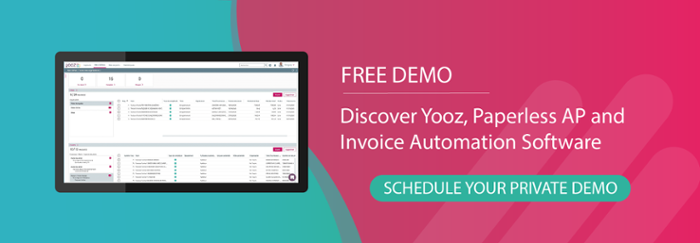From personalised websites and virtual health assistants to innovative digital healthcare solutions and on-demand healthcare solutions, the healthcare sector is undergoing a profound and rapid transformation. This change is empowering healthcare and medical professionals, providing them with the means to elevate the quality of patient care.
At the heart of this transformation? The COVID-19 pandemic. Undoubtedly, the pandemic acted as a catalyst, propelling the digitalisation of healthcare to the forefront of priorities.
As healthcare organisations witnessed notable shifts in patient preferences and expectations regarding care delivery, it quickly became apparent that their current approaches needed refining.
Find out how digitalisation is transforming another industry: finance.
Today, many healthcare companies have wholeheartedly embraced digital health technologies. They have tapped into the market realm of wearable medical devices, harnessed the potential of Artificial Intelligence (AI), seamlessly integrated digitalisation in finance, and even implemented brand-new healthcare platforms.
Yet, among all these advancements, what are the technologies having the greatest impact, and where can we expect them to evolve in the future?

Digital transformation in healthcare
The impact of digital technologies on improving clinical outcomes and ensuring patient safety have been extensively documented and discussed. Just like other industries, technology offers opportunities for scalability, connectivity, and perhaps most important of all for healthcare professionals, reliability.
Research studies show that technology-driven innovation enables the delivery of more personlised care, improves patient understanding, and has to potential to create $350bn-$410bn in annual revenue by 2025.
We all know that medical professionals demonstrate a deep commitment to the quality of their care, but what's always been a challenge for healthcare systems is their ability to scale rapidly and effectively in order to meet the demands of patients.
Here are just a few examples of the digital technologies that are helping to reshape healthcare for the better:
Enterprise Resource Planning (ERPs)
One of the things that's often overlooked is that hospitals, at their core, are businesses with healthcare being the product. In certain economies healthcare is subsidised - paid for - mostly by the government, supplemented by individual contributions from monthly earnings.
As such, hospitals content with complexities such as billing intricacies, industry and government regulations, manual processes, and intricate workflows that require expert management and precise timing. And things have only become more complicated post pandemic.
Enter Enterprise Resource Planning (ERP) systems. These platforms provide comprehensive business-wide support, enabling organizations to do everything from automating essential financial tasks and workflows (e.g. payment processing, procurement, and invoicing) to overseeing supply chain management (e.g. procuring medications).
The invaluable outcome is a vital benefit, one that frees up healthcare professionals and administrators to divert their focus and add value to other areas, ones such as improving the overall patient experience, acquiring new skills for themselves, or spending more time as caregivers.
Digital Financial Services (DFS)
Before the COVID-19 pandemic, healthcare expenditures alone caused 100 million people to fall into extreme poverty per year. In response, countries around the global have embraced digital tools that help ease patient access to healthcare services and payments, simultaneously supporting healthcare institutions with enhanced management and operational solutions.
The primary goal of Digital Financial Services (DFS) in healthcare is to advance universal health coverage and provide health programs for the most vulnerable demographics. This includes the delivery of essential health services. More specifically, it focuses on digital health insurance, health savings accounts, health-focused credit, transfers, remittances, and loans.
Real-time Accounts Payable (AP) automation
As mentioned above, the healthcare industry faces incredibly unique challenges from a financial perspective. These include the volume of invoices to the complexities of procurement. to guarantee timely deliveries, especially for medicines, streamlined processes are imperative. This includes timely payments to suppliers.
Real-time Accounts Payable (AP) automation offers a clear solution, one that is already implemented by many. This system simplifies purchasing, payments, and procurement processes. Since hospitals work with numerous suppliers, each with their own terms and arrangements, an AP automation system can expertly manage these quickly and without error. Administrators simply sets any payment/supply parameters and policies for each vendor, along with schedules, and the system will manage the rest.
In addition to supporting supplier relationships, AP automation streamlines the invoice processing and archiving. All of the information is captured digitally through digital invoice capture (which is far more sophisticated than Optical Character Recognition or OCR) and recorded in the hospital's ERP. With the right AP automation, hospitals can reduce costs by up to 80%. This kind of capability is critical as digital-first transactions become the standard.
Hospital administrators and finance teams can even go a step further and use ERP combined with AP systems to improve their data analytics and better forecast expenditures for the next year.
Medical imaging
At the AWS Summit in New York, Amazon announced AWS HealthImaging, a new HIPAA-eligible service that enables healthcare providers to store, analyze, and share medical imaging data at scale.
This medical innovation is of particular importance - and interest - because it optimises medical imaging data, preserving a single definitive image copy of that image for all clinical and research workflows. This effectively means that any medical professional (doctors, radiologists) or researcher (with the right level of access, of course) can retrieve the data for treatment or research purposes.
From ultrasonography to x-rays and Computer Tomography (CT), even for nuclear medicine, this technology is indispensable across healthcare levels in every setting and at every level, with cloud-based imaging systems ensuring scalability. This is truly nothing short of incredible.

Electronic Health Records (EHR)
An Electronic Health Record (EHR) is a digitalised version of a patient's paper chart stored in a central healthcare database. These records - EHR - have been used for decades, providing healthcare professionals with accurate, real-time medical data, including everything from a patient's medical history and prescribed care to allergies and previous attending physicians.
Furthermore, healthcare professionals can readily share EHRs, enabling other attending nurses and doctors to deliver the best patient care wherever the patient is. As EHRs are stored digitally and routinely updated at the point of care, it eliminates paper records at medical facilities. This ensures current, single data.
Finally, this digital repository diminished data replication risks and administrative work. Healthcare professionals can also analyze treatments and patient data to enhance outcomes. How? EHRs foster seamless sharing among healthcare professionals, optimising patient care regardless of location.
Telemedicine
Though telemedicine (also referred to as telehealth or mobile health) isn't new, the events of the pandemic underscored its necessity.
With global lockdowns, patients sought reliable, flexible ways to contact and engage with healthcare professionals for advice and care. As a result, organisations enhanced existing apps or created new ones to facilitate remote clinical services via mobile, laptop, or desktop devices. This allowed patients to effectively "book" appointments online.
These apps support real-time video and voice communication, ensuring effective communication between patients and physicians. They also allow physicians to prescribe medicine, and patients can access those prescriptions via their electronic health record, stored on whichever app they're using, further streamlining processes.

Remote Patient Monitoring (RPM)
One of these technologies healthcare providers around the world are using to improve patient outcomes and reduce costs is Remote Patient Monitoring (RPM). But what is it? RPM employs wearable medical devices that transmit patient data to physicians and databases as and when necessary, offering timely records and alerts for assistance if needed.
Common examples of RPM devices include continuous glucose monitors to remind diabetes patients to take their insulin, or pulse oximeters (which measure blood oxygen levels and pulse rate). These digital health solutions make it significantly easier for healthcare professionals to operate effectively and efficiently.
AI-powered medical systems
While many are concerned by the implications of AI-powered systems throughout every industry, these technologies are making significant strides in healthcare.
For years, professionals have talked about the possibilities of Machine Learning (ML) across the spectrum of health to explore diverse health aspects.
For example, n May 2023, The Guardian published an article highlighting how scientists at McMaster University used machine learning to identify new antibiotic treatments to help suppress a specific infection. Johnathan Stokes, an assistant professor at McMaster University said: "Using artificial intelligence, we can rapidly explore vast regions of chemical space, significantly increasing the chances of discovering fundamentally new antibacterial molecules,".
The reality is that as the understanding of AI improves, professionals in the healthcare industry can start to feed it more robust data sets to uncover trends and opportunities.
AI is also being used to detect diseases - such as cancer - more accurately and in their early stages. This type of application, combined with solutions from the wearable medical device market is making it much easier for doctors and other caregivers to monitor patient health and identify potentially life-threatening issues at earlier, more treatable stages.
Clinical workflows
Reliable and robust clinical workflows are absolutely critical for delivering exceptional patient care, especially considering the implications resulting from medical errors. Specifically, some articles claim that medical error (e.g., incorrect information, such as wrong dosages or treatment) is one of the leading causes of death each year.
But regardless of how accurate the claims are, the fact remains that detailed patient health data records must be passed on to healthcare professionals (and anyone else responsible for patient care) as soon as possible.
Clinical workflows offer healthcare professionals access to a structured framework that support and streamline the delivery of care. It essentially represents a series of interconnected events (or steps) that take place in a clinical environment and are performed by different professionals. These events are supported by electronic health record which can flow freely into these clinical workflows, providing a clear, comprehensive overview of a patient's health.
Ultimately, clinical workflows provide a pattern or foundation for care that's repeatable, reliable, and scalable.
The future of healthcare
As artificial intelligence and big data are intertwined with day-to-day operations and processes, we'll see a gradual elevation of how healthcare professionals work and engage with patients.
Suddenly, they'll have access to every single bit of information they need to ensure the best possible patient outcomes, from similar patient cases across the world and treatments provided to AI-based recommendations for new antibiotics. And just consider, we've already got the likes of IBM Watson and Google Health!
Over time, healthcare will become increasingly data-driven, increasing the reliability of certain practices, while workflows provide the necessary scale. As a result, hospitals will be able to deliver resolutions far quicker, whilst simultaneously maintaining a high standard of care at every level.
These capabilities, combined with real-time, cloud-based financial solutions helps to cut costs at both the patient and organisation. This enables healthcare providers to prioritise patients and deliver a higher, reliable standard of care.
In saving costs, they can also increase expenditure on the necessary medicines and equipment that patients need, as well as take on more staff to get to patients sooner.
At the end of the day, it's all about the patient's health, and technology just provides a means to make it better.
If you're looking for a powerful Purchase-to-Payment (P2P) automation solution to streamline purchasing, payment, and procurement while reducing your hospital's costs at every level, we can help.
Reach out to today to learn more about joining the over 5,000 customers and 300,000 users worldwide.
.

.jpeg)







